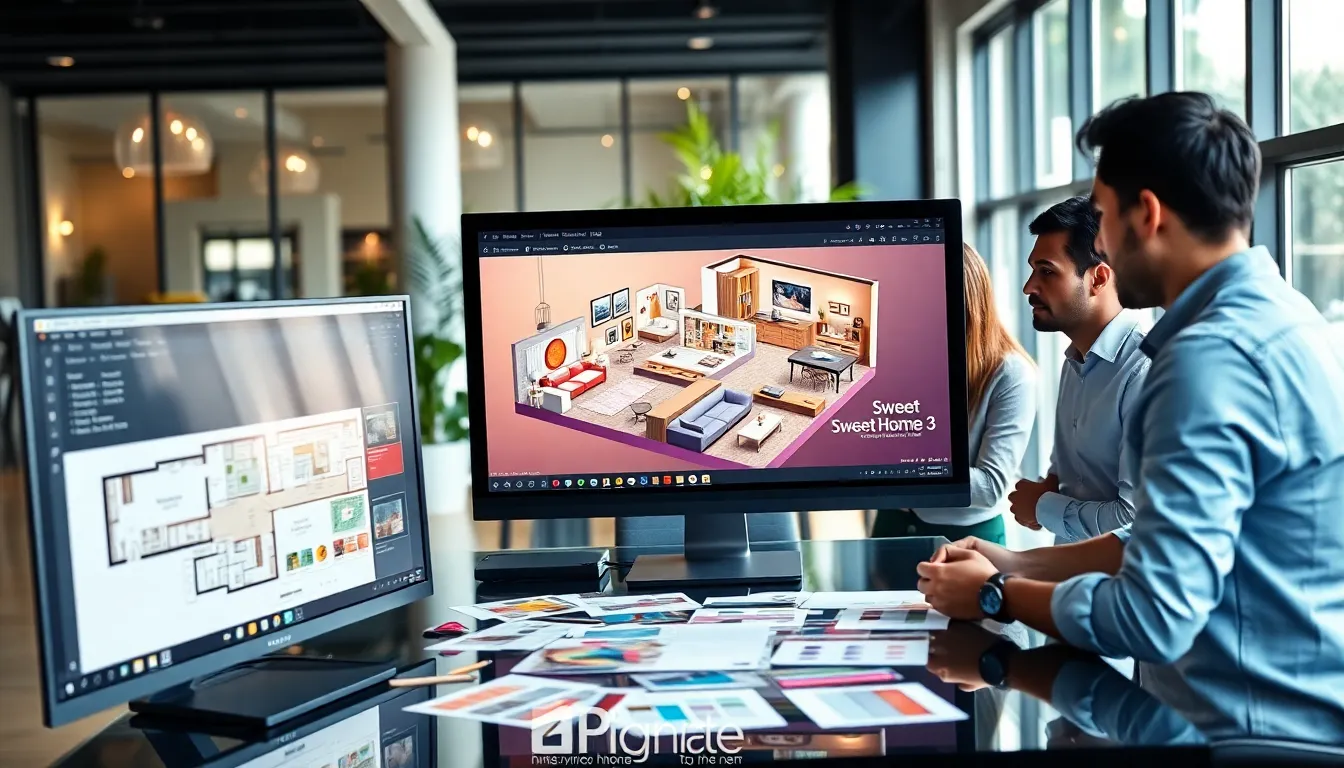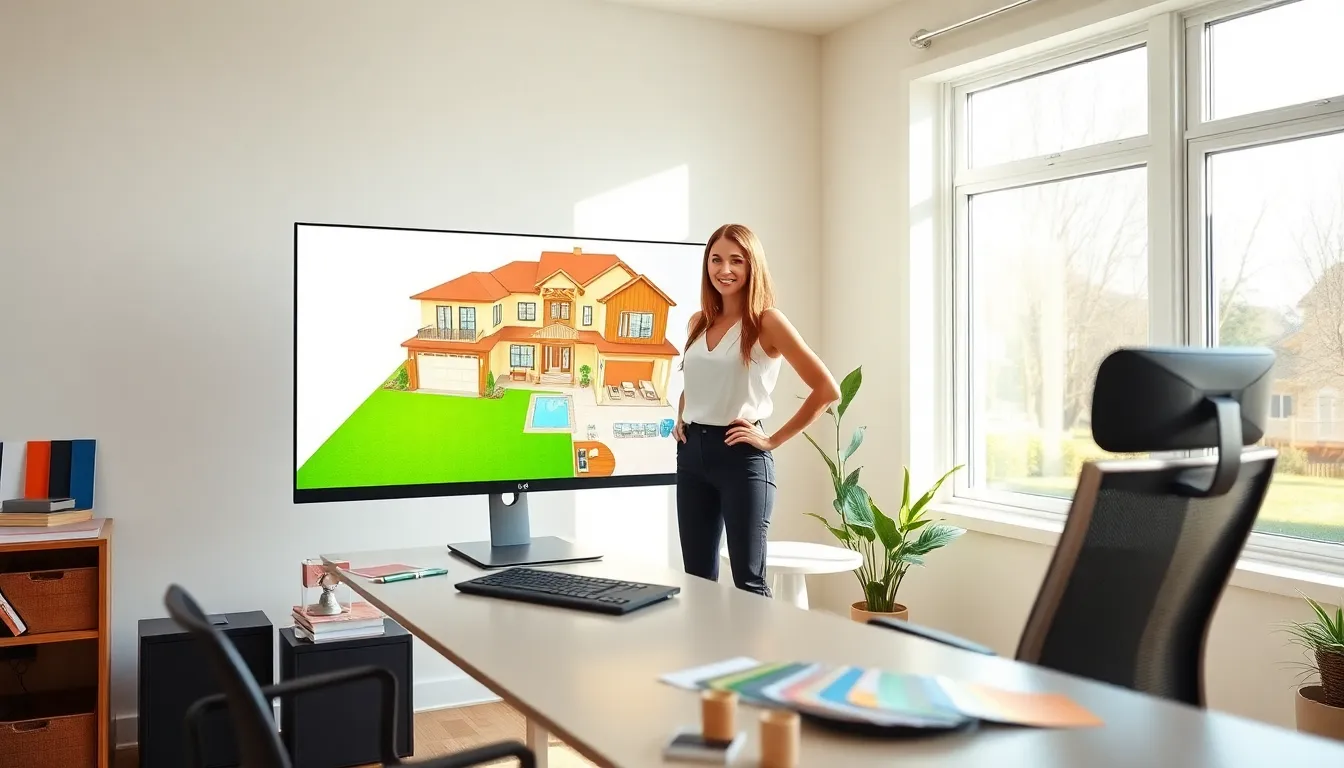Have you ever dreamed of designing your very own home but got overwhelmed by the thought of busy architects and sky-high budgets? Enter Sweet Home 3. This powerful yet easy-to-use software is like having a personal designer at your fingertips, minus the hefty price tag. Jump into a world where creativity flows, and practicality reigns supreme. In this guide, we’ll explore the ins and outs of Sweet Home 3, making your design journey not just productive but enjoyable. So, let’s get started, your dream home awaits.
Table of Contents
ToggleWhat Is Sweet Home 3?

Sweet Home 3 is a free open-source interior design application that simplifies the process of home design. It allows users to draw floor plans, furnish and decorate their homes, and visualize how their ideas would look in real life. Imagine being able to plan your dream space without lifting a paintbrush. Sweet Home 3 caters to DIY enthusiasts and professionals alike, offering an intuitive interface packed with features that can bring any vision to life. Whether redesigning a single room or laying out an entire floor plan, this software equips users with the tools needed to turn ideas into reality.
Key Features of Sweet Home 3
Sweet Home 3 boasts a variety of features designed to enrich the user experience:
- 2D and 3D Views: Users can switch effortlessly between two-dimensional floor plans and three-dimensional representations of their designs, providing instant visual feedback.
- Drag-and-Drop Furniture Placement: Adding furniture is as simple as dragging and dropping, making it easy to experiment with different layouts and styles.
- Extensive Furniture Catalog: With thousands of pieces of furniture available, users can customize their space to their heart’s content, ensuring every detail matches their vision.
- Realistic Lighting Effects: The software simulates light effects to help visualize how different times of day and orientations affect room ambiance.
- Custom Textures and Colors: Users can apply customized colors and textures to both walls and furniture, personalizing the design even further.
These features, combined with a friendly learning curve, make Sweet Home 3 a powerful ally in home design.
Getting Started with Sweet Home 3
Starting with Sweet Home 3 is a breeze. Here are some steps to help you jump into your design project:
Designing Your Space with Sweet Home 3
To kick things off, launch the application and create a new project. The first step usually involves drawing the floor plan. Set the dimensions accurately, as this serves as the foundation for your entire design. Sweet Home 3 offers a variety of tools to create walls, add windows, and insert doors, all with a straightforward interface. Remember, this is your canvas.
Navigating the User Interface
When users first access Sweet Home 3, they may feel overwhelmed by all the options, but it’s designed intuitively. The toolbar presents tools for every aspect of design, be it drawing walls or adding furniture. The left panel displays all embedded objects, and you can easily drag them onto your plan. Don’t hesitate to explore: the more comfortable you become with the interface, the more fun the design process will be.
Adding and Customizing Furniture
Once the space is drawn out, it’s time to add furniture. Browsing the catalog, users will find a range of items from basic furniture to more intricate decor elements. Drag and drop pieces onto the plan, resize them, and customize colors and textures to suit individual preferences. Each piece can also be rotated to fit the desired layout seamlessly. Fun fact: Sweet Home 3 even allows users to import their custom models, giving the freedom to truly tailor the space.
Exporting and Sharing Your Designs
After crafting the perfect design, it’s time to showcase your work. Sweet Home 3 allows users to export their projects in various formats. Users can:
- Create high-quality images of their designs to share directly on social media or with friends and family.
- Generate floor plans in PDF format for printing, making it easier to picture the physical space.
- For more technical needs, exporting the design as a 3D model lets users explore their home in virtual environments. Sharing designs with others not only reflects the time and effort spent: it opens the door to feedback that can further enhance the project.
Tips and Tricks for Effective Home Design
Designing a space can be both exciting and overwhelming, but with a few tips and tricks, the process can be streamlined:
- Plan for Functionality: Before diving into aesthetics, consider how the space will be used. Think about flow, traffic patterns, and the purpose of each area.
- Use Lighting Wisely: Experiment with various light sources. Natural light can make a difference when positioning furniture, and strategic lighting can create mood.
- Color Coordination: Stick to a cohesive color palette. It can unify a space and make it feel larger and more welcoming.
- Incorporate Personal Touches: Don’t shy away from adding personal items or unique decor that tells a story. It’s these elements that transform a house into a home.
- Seek Feedback: Share your designs with family or friends before finalizing. Fresh eyes can offer valuable insights.



